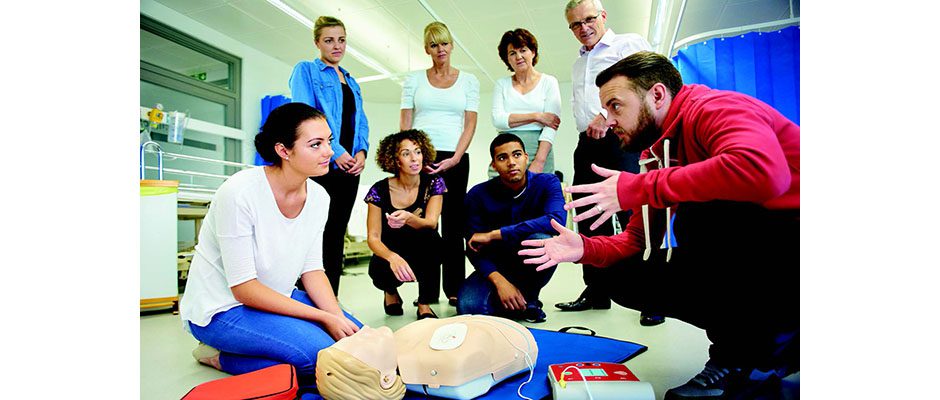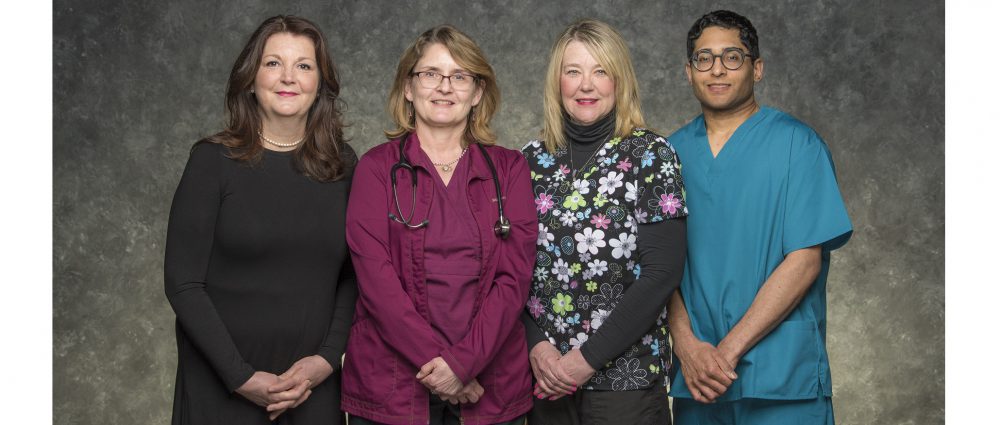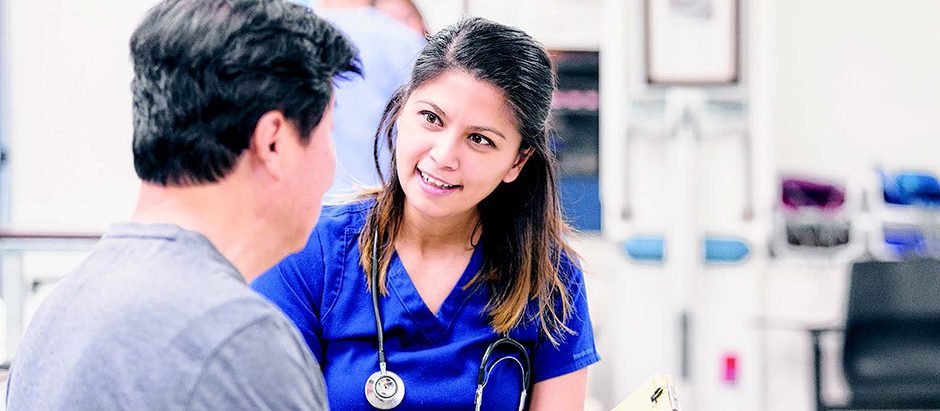
[This article was written by The Emergency Services Team for St. Peter’s Health Partners.]
Earlier this year, the news was full of stories about Damar Hamlin, the Buffalo Bills football player who went into cardiac arrest during a game against the Cincinnati Bengals. Medical experts immediately attended to him on the field and one of the tools they deployed – and which likely saved his life – was an Automated External Defibrillator (AED).
Sudden cardiac arrest can occur when the heart suddenly stops beating due to a malfunction in its electrical system. The only effective treatments are to deliver cardiopulmonary resuscitation (CPR) and an electrical shock that helps the heart to recover a normal rhythm. That’s where an AED can make all the difference.
An AED is a laptop computer-sized device that can guide an untrained user with automated voice commands and screen messages that begin when the device is opened up or turned on. AEDs are extremely easy and very safe to use. They will not deliver a shock to a person in a situation where one is not needed.
First, the user attaches adhesive pads to the bare chest of the person in distress. Then the AED computer analyzes the person’s heart rhythm and determines if a shock is needed. If so, the device will deliver the shock. Repeat shocks may be necessary until a normal rhythm returns.
The American Heart Association (AHA) estimates that nationwide 250,000 cardiac arrests occur annually, with only five percent of victims surviving. A major reason for the low survival rate is that the chance of survival drops roughly ten percent for each minute that passes from the onset of cardiac arrest to treatment with CPR and defibrillation.
AEDs are designed specifically to assist a person experiencing certain, very abnormal, life-threatening heart rhythms where the heart is electrically active, yet unable to beat in a usual pattern, and not a heart with no electrical activity at all. If you come upon a person who is unconscious, check for signs of breathing and pulse, and immediately begin CPR while someone else calls 911 and looks for an AED.
AEDs are generally found in places where large groups of people gather, such as shopping centers, airports, schools, gyms, places of worship, and sports stadiums. Knowing where they are located, just as you would be aware of fire exits in an emergency situation, can mean the difference between life and death.
The AHA is a nationwide leader in resuscitation education. They regularly offer life support courses for the public that teach basic CPR and AED use. For more information or to find a training near you, please visit https://cpr.heart.org/.
When every second counts, St. Peter’s Health Partners has top-quality emergency departments and urgent care centers all across the Capital Region. Our emergency departments in Albany and Troy are open 24 hours, seven days a week, offering a wide range of services for emergency care with highly trained staff, diagnostic testing and access to specialists.
For more information, visit us at sphp.com/for-patients/think-before-you-go.





